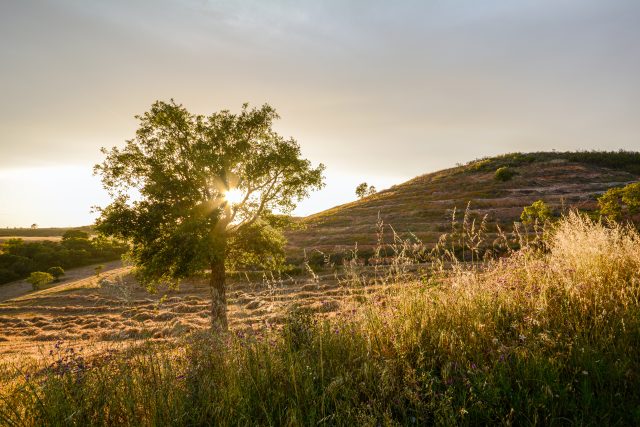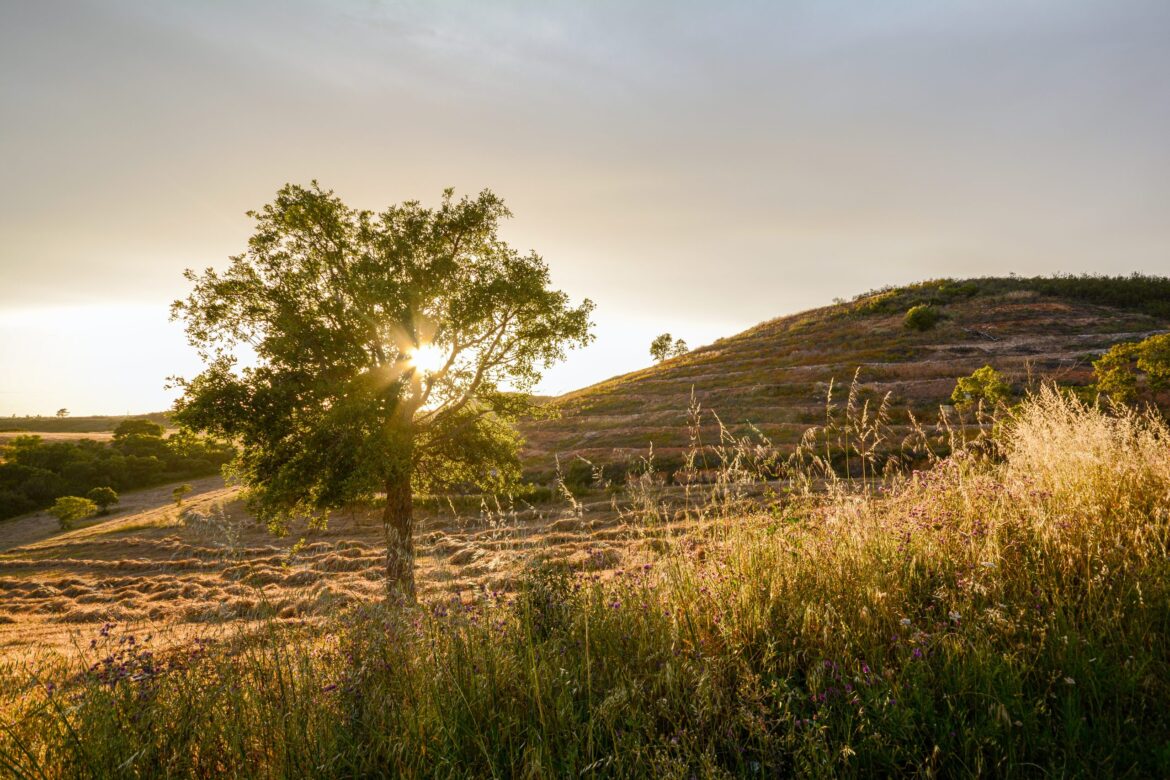Gone are the days of vintners automatically turning to French or American oak to age their wines. With terroir becoming ever more hyper-focused, Portuguese producers are increasingly housing their wines in barrels made from local wood. Sarah Neish reports.

At one time Portuguese oak was mainly used for ageing Port and other fortified wines, but the wood is increasingly finding its way into the cellars of table winemakers in Portugal, and with good reason.
“Recently, there has been growing interest in using Portuguese oak barrels,” Francisco Toscano Rico, president of Wines of Lisboa, tells db. Describing the material as “denser and less porous than French oak”, he explains that Portuguese oak “allows less oxygen into the barrel, making it suitable for longer maturation without the wood dominating, while adding a unique character to the wine.”
Since Quinta do Gradil, a former royal hunting lodge about an hour away from Lisbon, launched two wines, a Tannat and an Alicante Bouschet, in Portuguese oak about five years ago, its success has led to other producers experimenting with the wood.
More tannins
António Ventura, one of the most renowned winemakers in Portugal, explains that Portuguese oak is “more rustic and resinous, which works very well with grape varieties that have more tannins, such as Alicante Bouschet, Tannat, Caladoc and Sousão, which have all given excellent results.”
Ventura is the winemaker at Quinta de Atela on the southern banks of the Tejo river and has a chocolate box of grape varieties at his disposal in its 600ha vineyard, including Chardonnay, Sauvignon Blanc, Gewürztraminer, Arinto, Moscatel Graúdo, Alvarinho, or Viosinho; and for reds, Castelão, Pinot Noir, Trincadeira Preta, Alicante Bouschet, Merlot, Caladoc, Aragonez, Syrah, Touriga Nacional, Cabernet Sauvignon, and Petit Verdot. As such, he has had the opportunity to trial Portuguese oak using a number of different grapes. He also played a pivotal role in the Porta 6 wine label, a favourite in the UK market, which produces around six million litres of reds and one million litres of whites per year, and works as a consultant for producers all over Portugal through his company Provintage.
“In my experience as a winemaker, what I have learned from using Portuguese oak is that it makes wines more authentic and ‘unmasked’,” he says. “Even with long maturation, the wood never dominates the wine, which in my view is a great advantage.”
Top of the range wines
While he describes using Portuguese oak with the floral Touriga Nacional grape as “not interesting”, Ventura has found success with ageing reds in the Alentejo, Douro and Lisbon regions — “especially with grape varieties that have good tannic structure, such as Alicante Bouschet, Sousão and even Tinta Miúda.”
Elsewhere, Portugal’s Carcavelos DOC and Lourinhã DOCs are increasingly using Portuguese wood “for top-of-the-range wines” due to its ability “to add freshness, minerality and structure, as well as to promote controlled development.”
Quinta da CasaBoa, Adega de São Mamede and Quinta do Carneiro are all fans of using Portuguese oak.
According to Toscano Rico, Portuguese oak also has the ability to enhance white wines, especially those made using Arinto – “the queen grape of the Lisboa wine region” – which he says has “extraordinary ageing potential”. Traditionally, winemakers in Portugal have looked to chestnut to age their whites, with the chestnut lending wines a subtle, sweet flavour.
Portuguese oak tends to give white wines a pale straw yellow hue, which may be another key advantage for modern consumers. “40 years ago, if whites weren’t topaz yellow, they weren’t well received; they were dismissed as water,” Ventura told Revista de Vinhos. “If, today, you present a wine with that colour to the consumer, they’ll say it’s no good.”
Different from cork oak
Portuguese oak (quercus pyrenaica) is not to be confused with Portuguese cork oak (quercus suber), known for its thick, insulating bark, which can be harvested for cork. Portuguese oaks can be deciduous or evergreen, and their bark may be smooth, fissured, or otherwise textured, but they do not have the qualities needed for cork.
Quercus pyrenaica is commonly planted in the north of Portugal, and is therefore used in the ageing of Douro reds. Contrastingly, the lion’s share of cork oak forests are found in Alentejo, in the south of Portugal. As a whole, Portugal is home to about 33% of the world’s cork forest surface area.
In 2023, db reported that California is eyeing up domestic cork production, in order to save time and money on shipping Portugal-made cork stoppers over from Europe (the journey from Portugal to California takes around one and a half months). Californians are also interested in the “practically flame resistant” quality of cork oak trees, which could be a game changer in preventing the wild fires that are becoming so prevalent in the region.
“It is really difficult to burn a cork oak tree. And if it does burn it will regenerate like a phoenix,” said Nuno Silva, marketing manager for Portuguese closures firm MA Silva. “The trees are resistant to fire, to heat, to rain. They resist a lot.”
Related news
Domaine de Baronarques kicks off La Place’s hors Bordeaux campaign
Sotheby’s hosts sale of HK$10m Albert Yeung wine collection
Go your own way: Bodegas Roda and La Horra (Part I)


Dining and Cooking